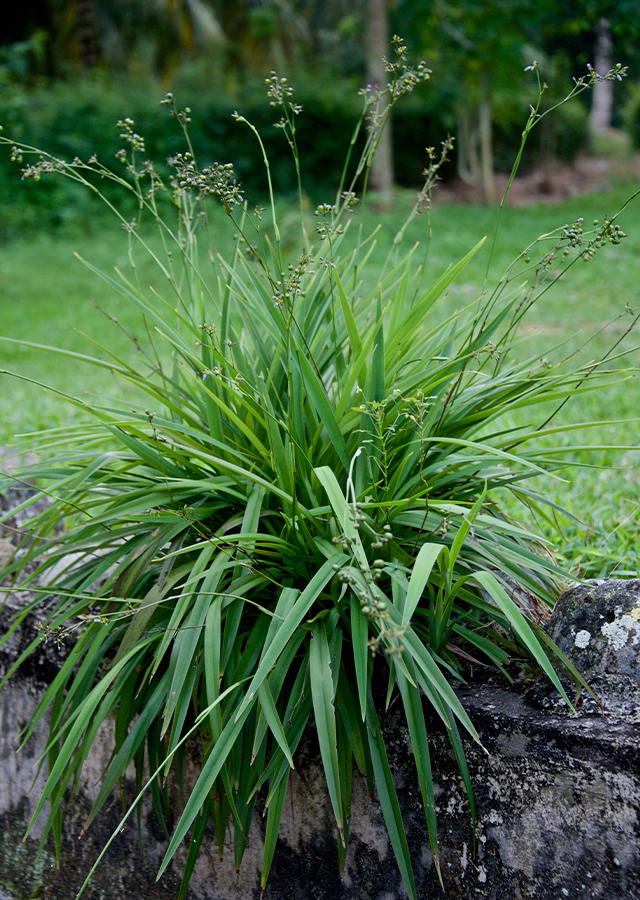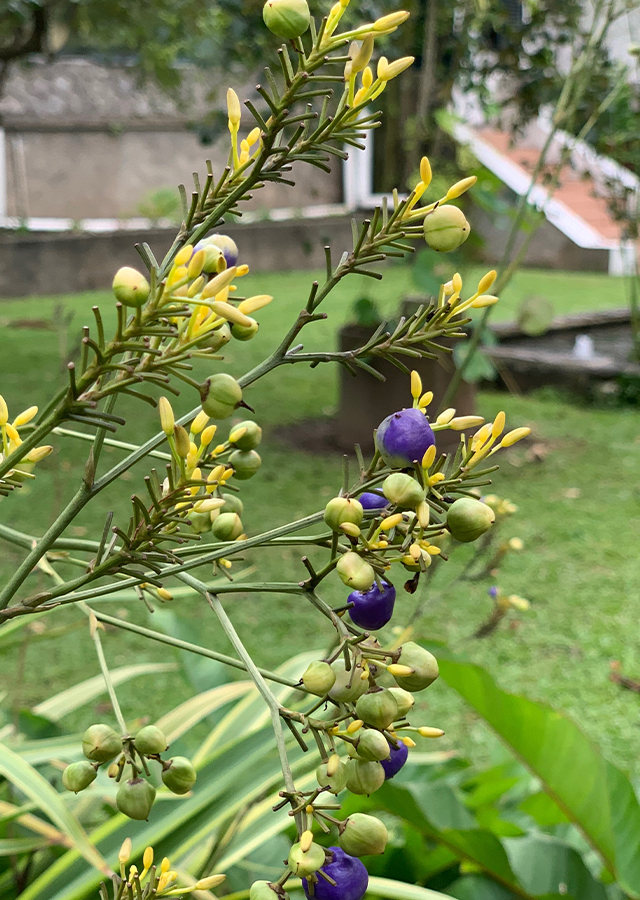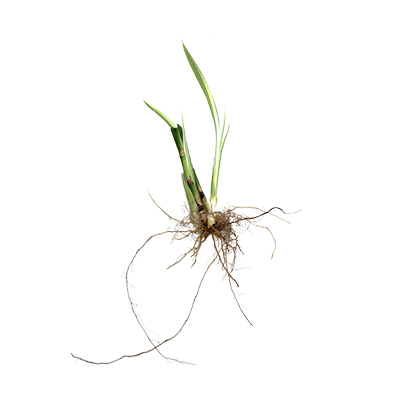Flax-lily
Dianella ensifolia (L.) Redouté
Asphodelaceae
Location in our garden
Principal



Synonym
Anthericum japonicum Thunb.
Charlwoodia ensata (Thunb.) Göpp.
Cordyline ensifolia (L.) Planch.
Habitus
Herbaceous. A perennial, with stems 60 to 150 cm long.
Part Used
Leaves
Fruit
Roots
Stem
The Whole Plant
Growing Requirements
Full Sunshine
Habitat
Forest
Shrublands
Grassland
Overview
This herb is suitable for parks and gardens, and may be able to tolerate roadside conditions. It is grown as for its lush foliage, and attractive flowers, and shiny, deep blue fruits that are most unusual for the local flora. D.ensifolia occurs in India to the Mascarene Islands, in China, Taiwan, Malaya, in tropical Australia and in Polynesia.
Vernacular Names
Jamaka (Sundanese-Indonesian), Menuntil (Sumatra-Indonesian), Lebeh-labeh (Kalimantan-Indonesian), Kikyo-ran (Japanese), Ya nu ton (Thai), Shan jian lan (Chinese), Cay huong lau (Vietnamese).
Agroecology
Succeeds in tropical and subtropical climates. Grows best in a sunny position. Succeeds in any moderately fertile soil. The plant has a long flowering season, sometimes flowering all year round. It grows from lowlands to over 3,000 m altitude.
Morphology
- Roots - robust fibrous.
- Leaves - have leathery leaf blades that are sword-shaped, tapered at both ends, and 25– 100 by 0.4–3.0 cm, with sheaths at their bases.
- Flowers - its flowering shoot is up to about 61 cm long, and extended from the tip of its stem. It bears flowers up to 0.6 cm wide, with white or bluish-white petals and sepals, and bright yellow-orange anthers.
- Fruits - ripe fruits are round, shiny, deep blue berries, up to 1.5 cm wide, and contain 3–6 seeds. Its seeds are ovoid, 3–5 mm long, shiny, and black.
- Seeds - ovoid and bluish.
Cultivation
- It is propagated by seed, or splitting clumps.
- Pre-soak seeds for 24 hours in lukewarm water and placing 3-4 seeds in a pot. Germination usually takes place within 1-3 months at 25 °C.
Chemical Constituents
Benzenoids (musizin and others), armandinol, quinones (chrysophanol and isoeugenitol), favans, essential oils (allo-aromadendrene, geranylacetone, hexahydrofarnesyl acetone, longifolene and β-caryophyllene), triterpenoids.
Traditional Medicinal Uses
- It is vermifuge, vulnerary, and tonic.
- Studies suggest antioxidant, anti-inflammatory, antibacterial, tyrosinase inhibitory, anticancer properties.
- In Indonesia, used for gastrointestinal infections, herpes, urogenital disorders, and skin infections.
- In southern Thailand, roots used for kidney diseases. Preparations from whole plant used to relieve paralysis.
- In China, paste of plant applied to swellings.
- In Cambodia, Laos, and Vietnam, plant used for fatigue.
- Dry powdered rhizomes blended with vinegar applied locally for furunculosis and abscesses, lymphangitis, tuberculous lymphadenitis, tinea and traumatic injuries.
Part Used
Reference Sources
- Thin, N.N. & Thanh, N.T. (2002). Dianella ensifolia (L.) DC. In: van Valkenburg, J.L.C.H. and Bunyapraphatsara, N. (Editors): Plant Resources of South-East Asia No 12(2). Medicinal and poisonous plants 2. Prosea Foundation, Bogor, Indonesia. pp. 223 - 224


